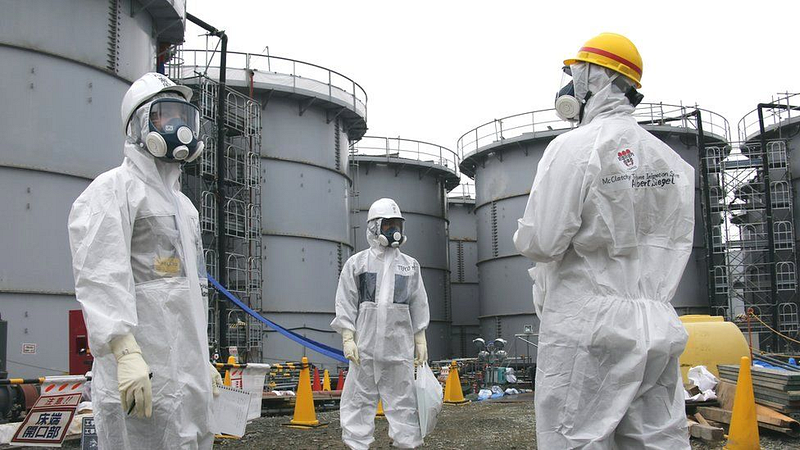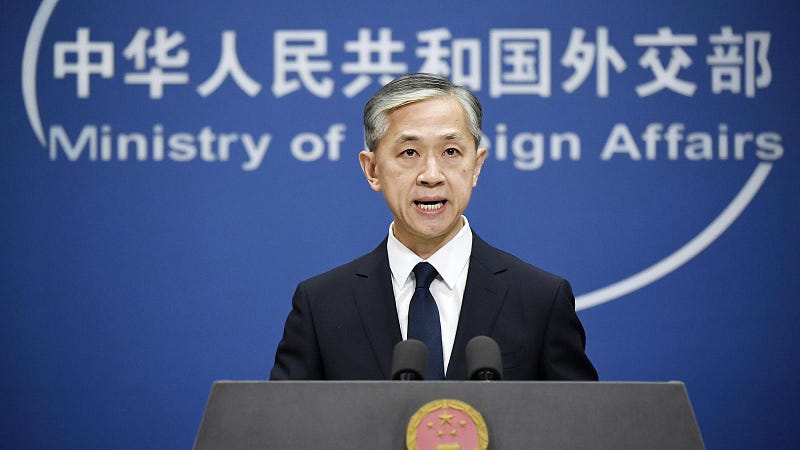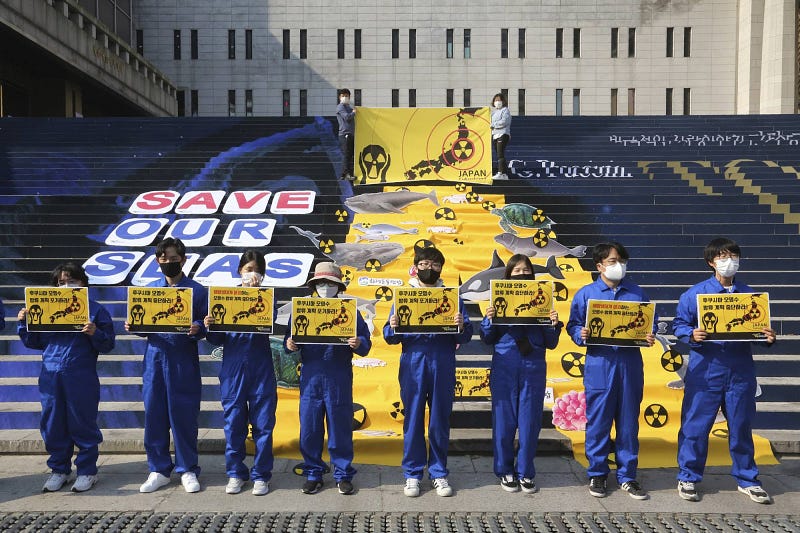Japan’s Disposal of Radioactive Wastewater: Outrageous or Standard Procedure?
Did this heart-wrenching image evoke a deeply buried memory in your mind? Did news stories and tear-jerking tales of people being swept…

Did this heart-wrenching image evoke a deeply buried memory in your mind? Did news stories and tear-jerking tales of people being swept beneath the seas from 10 years ago run through your mind? If not, let me refresh your memory of this tragic disaster that struck eastern Japan in 2011.
The Earthquake, Tsunami and Nuclear Disaster: 11 March 2011
It is known as the Tōhoku earthquake and tsunami since the Iwate Prefecture of Tōhoku was the primary location of impact during the disaster. The earthquake measured 9.0 on the Richter scale (a scale of numbers used to show the magnitude of earthquakes) and the tsunami reached 40.5 metres in height. In the aftermath of this tragedy, according to government statistics, 19,497 lay dead and 6,242 injured. While international aid was quick to arrive, another crisis that was about to spark fears worldwide was on the horizon. This would come to be known as the Fukushima Daiichi nuclear disaster when the tsunami caused a massive power failure in the plant and subsequently loss of cooling for the fuel rods within the reactors. The meltdowns released significant amounts of radiation that forced the Japanese government to order an evacuation of at least 154,000 residents in the area. The primary reason that this nuclear accident raised concerns worldwide is due to the still vivid memories of the much more severe nuclear disaster 27 years prior (in 1984) that occurred in the now Ukrainian city of Pripyat when the nearby Chernobyl plant imploded during a test run. The latter led to the evacuation of 335,000 residents and the establishment of a 30-km wide Exclusion Zone that is abandoned to this day. In the present day, a 4,143 square kilometres exclusion zone is still in place around Pripyat (2016) compared to one that has shrunken to only 371 square kilometres one around Fukushima (2017).

While the effects and subsequent cleanup of the Daiichi disaster were not as severe, the consequences of the event are still affecting government decisions in Japan today, 10 years later. Comparing the two time periods, neighbouring countries were much more sympathetic during the initial disaster and subsequent nuclear disaster; in April this year, however, when the Japanese government approved Tepco’s (the utility giant that owned and operated the Daiichi plant) plan to dispose of the treated nuclear wastewater into the great expanse of the Pacific ocean, the reactions from neighbouring China and South Korea were much more confrontational and disapproving.
Announcement of Disposal Method for the Waste Water: April 2021
In response to the nuclear disaster, Tepco cycles in water to keep fuel and debris cool, about 100 cubic meters of groundwater flow through daily and gets contaminated. The tainted water will then be pumped into the Advanced Liquid Processing System (ALPS), then stored in one of roughly 1,000 tanks at the site pictured below.

According to an analysis by the Washington Post, it is reported that the aforementioned processing removes most of the radioactive elements except for tritium (3He). What is tritium? Is it dangerous? You may ask. Well, it’s a form of hydrogen that has two extra neutrons, making it weakly radioactive. It is naturally produced in the upper atmosphere of our planet and also is a common byproduct of nuclear power generation. In daily life, however, it is used in the production of glow-in-the-dark items as exit signs and watch dials. The latter query can be answered with this: Frankly speaking, it can be carcinogenic at high levels. While it is unable to penetrate our skin, it can be ingested through tainted water or seafood from these waters for that matter. Despite this, it is important to note that, according to the Canadian Nuclear Safety Commission, a human would need to ingest billions of units of becquerels (a measure for radioactivity, the unit of which is Bq) before seeing any health effects. The Tepco tank with the highest concentration has 2.5 million Bq per litre. In comparison, a banana has 15 Bq while 1 kg of uranium has 25 million Bq. Thus, it can be inferred that disposal of the water into the ocean will not cause immediate health issues unless allowed to accumulate in our bodies for an extended amount of time. David Hees from the World Nuclear Association claims that nuclear plants across the world discharge tritium and other radioactive materials into rivers and oceans annually since it is a common practice. However, it is done in small and safe amounts.
When will the disposal of the Contaminated Waste Water begin: 2023(?)
According to an April report from the Japanese Ministry of Economy, Trade and Industry, it will not take place for at least another 2 years. The water will be diluted and reprocessed before its release. How it will be released ie. how frequently and in what amount is yet to be decided at the time of writing, but it will be subjected to its national regulation agency, the Nuclear Regulation Agency (NRA). The IAEA (an autonomous international organization within the United Nations system) is based, suggests that it might be preferable to pump the water at depth in the middle of the ocean rather than along littoral coastlines where marine life breeds. Some radiochemists say the idea has some merit, but note that International Maritime Organization laws prohibit the intentional release of radioactive material in the open ocean. This was due to Russian low-level dumping in the Sea of Japan during the 1990s. Despite this, D-G Rossi of the IAEA pledged technical support for the Japanese government once the announcement was made.
The controversy over Japan’s chosen disposal method: Is this truly detrimental to the environment?


While some question why disposing it into the sea is the option chosen by the Japanese government, the short answer is that Tepco is essentially out of room on the facility grounds. It has already cleared 500 square meters worth of trees just to make room for about 1,000 tanks. Japan could move toward more long-term storage on nearby land by investing in petroleum reserve tanks, the biggest of which can hold some 2.4 billion litres of liquid. It’s unlikely anyone will want to live in areas around the plant for a long time if this was the chosen method to deal with the wastewater. Other than that, it would also require a political decision that the Japanese government does not wish to go with.
As a result, the South Korean and Chinese governments have voiced concerns that the radioactive water from the nuclear plant could affect food safety and have grave ramifications on marine life in the area. South Korean officials renewed their “grave concern” about the release in April, despite the fact that ocean currents are unlikely to bring any contaminated water near its shores. China likewise urged the Japanese government to act prudently, while the U.S. instead said the release was in line with global standards with its Secretary of State, Anothony Blinken supporting the Japanese government’s decision. Meanwhile, local fishing groups in the Fukushima prefecture remain strongly opposed as well, fearing that it could further taint the reputation of their catch and affect their livelihoods. This is because many countries imposed import restrictions on seafood products from the region after the initial nuclear disaster.

In conclusion, it seems as if there are very different opinions on both sides of the coin with one claiming that this disposal method is outrageous and disregards environmental concerns while the other claims that this is simply standard procedure and thus no need for concern. This is a contentious issue that has no simple solution and in my opinion, the government simply acted in the best interest of its citizens and the progress of the clean up at Fukushima. Whether if it is as severe as Japan’s neighbours claim or as worry-free as its long-time ally the U.S. claims, we will have to observe its impacts through oceanic and nautical studies conducted in the region only after the disposal had taken place, unfortunately.
Content Sources:-
Press release no. 161 of the 2011 Tohuku earthquake [Fire and Disaster Management Agency]
South Korea’s protests to the US over Japan’s Fukushima wastewater plan fall on deaf ears
IAEA Ready to Support Japan on Fukushima Water Disposal, Director-General Grossi Says

